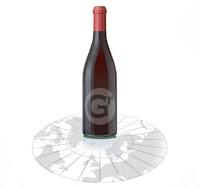L'Ermita is the flagship product of Alvaro Palacios, one of the pioneering young winemakers who accompanied René Barbier to Priorat to reclaim that region's winemaking traditions. In what has come to be known as the "Grattalops Project," these winemakers had separate vineyards but shared winemaking facilities in order to control costs and quality. Palacios had an excellent winemaking pedigree prior to his involvement with Gratallops. He was one of nine children born to the owner of Bodega Palacios Remondo, a respected Bodega in the Rioja Baja, had studied winemaking in Bordeaux, and had worked at Chateau Petrus for 2 years under the famed winemaker Jean Pierre Mouiex.
Palacios bought his first vineyard in Priorat -- Finca Dofi -- in 1990 and then found, and bought, L'Ermita in 1993. L'Ermita, named for a small chapel at the top of the hill on which the vineyard lies, is a north-east facing, 2-hectare plot that sits between 400-500 meters elevation on a precipitous, well-drained, granite slope. The steep hillside terraces, some only wide enough for one or two rows of vines, are populated by gnarled, head-pruned Garnacha vines which were all planted between 1900 and 1940. Since 2000, Palacios, whose practices reflect his view that wines are "a transparent expression of the terroir," has been farming L'Ermita biodynamically.
 The grapes for the wine are hand picked with teams making multiple passes through the vineyard to ensure that the best grapes are picked at the right time. Prior to 2005, the finished wine contained 20% Cabernet Sauvignon, added to provide structure. Since 2005 the wine has been 100% Garnacha. The wine undergoes maceration for 25 days in oak vats and is then aged in 100% new French oak for 16 to 18 months. The yield is approximately 10 hectoliters/hectare and annual production is 250 cases.
The grapes for the wine are hand picked with teams making multiple passes through the vineyard to ensure that the best grapes are picked at the right time. Prior to 2005, the finished wine contained 20% Cabernet Sauvignon, added to provide structure. Since 2005 the wine has been 100% Garnacha. The wine undergoes maceration for 25 days in oak vats and is then aged in 100% new French oak for 16 to 18 months. The yield is approximately 10 hectoliters/hectare and annual production is 250 cases.Andrew McNamara had identified the 1998 vintage of this wine as one of his wines of the decade and Robert Parker, in assigning it a score of 97, fawned over it thusly: "The blockbuster, opaque purple-colored 1998 L'Ermita exhibits ... copious quantities of sweet oak, a boatload of glycerin and superb blackberry, cassis, and cherry fruit that explodes on the mid-palate and in the finish."
I had the wine shipped into state by overnight delivery so that it would be a part of the Wine Barn celebration of Grenache Day. The details of the evening were covered in a prior post so I will limit myself herein to the circumstances surrounding the tasting of the L'Ermita. The wine was taken from me when I arrived at the location and was placed into a brown paper bag as were all of the other wines. The donated wines were
marked uniquely in order to differentiate them from each other as well as from the larger group of wines. I was able to identify the L'Ermita and, after my first encounter with it, it was impossible to dislodge me from my position at the tasting table.
The wine had a youthful appearance with some slight browning at the edges and showed blackfruit, cassis, cedarbox and vanilla on the nose. The scents were so compelling that it took significant effort to transition from smelling to tasting. The wine delivered on the palate with blackfruit, minerality, acidity, excellent balance, and a very long finish. All elements of the wine were fully integrated and the youthful appearance and taste of the wine signaled even greater drinking pleasure down the road.
A definite homerun, as can be seen by the look of amazement on the face of Andrew Montoya, owner of The Wine Barn., as he removes the bag to reveal the identity of the wine.












 While the International Grenache Day festivities did not seem to garner the same volume of tweets and posts as those for #Cabernet Day and, more recently, #Bubbly Day, there was considerable global enthusiasm as was evident in the number of locations contributing tweets, the buzz leading up to the event, as well as through information disseminated in preparation for the tasting events (A list of wines and background information from the 1st Annual Grenache Symposium, a primer on the grape, and "activation ideas" for the event, were all made available.).
While the International Grenache Day festivities did not seem to garner the same volume of tweets and posts as those for #Cabernet Day and, more recently, #Bubbly Day, there was considerable global enthusiasm as was evident in the number of locations contributing tweets, the buzz leading up to the event, as well as through information disseminated in preparation for the tasting events (A list of wines and background information from the 1st Annual Grenache Symposium, a primer on the grape, and "activation ideas" for the event, were all made available.). 





































